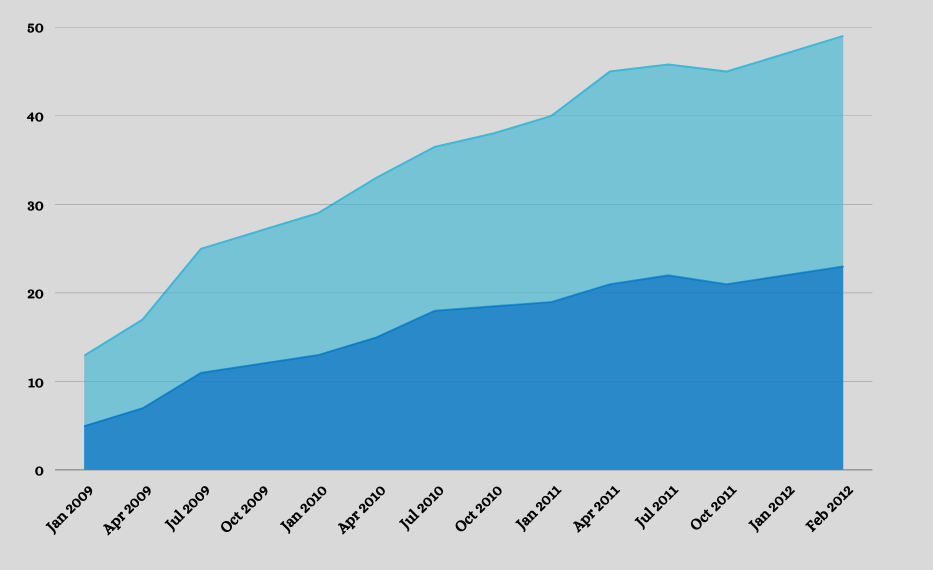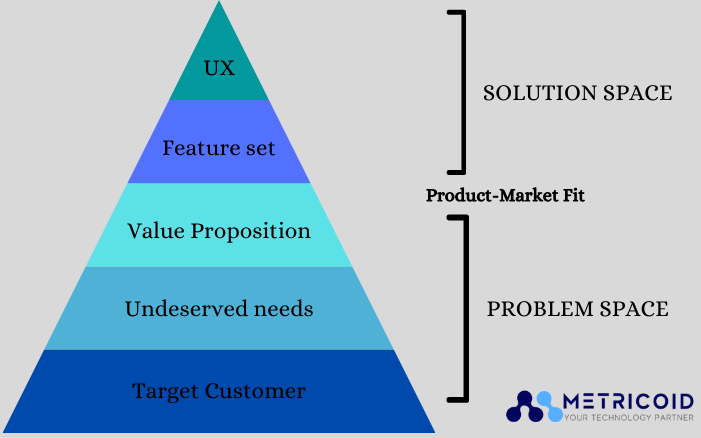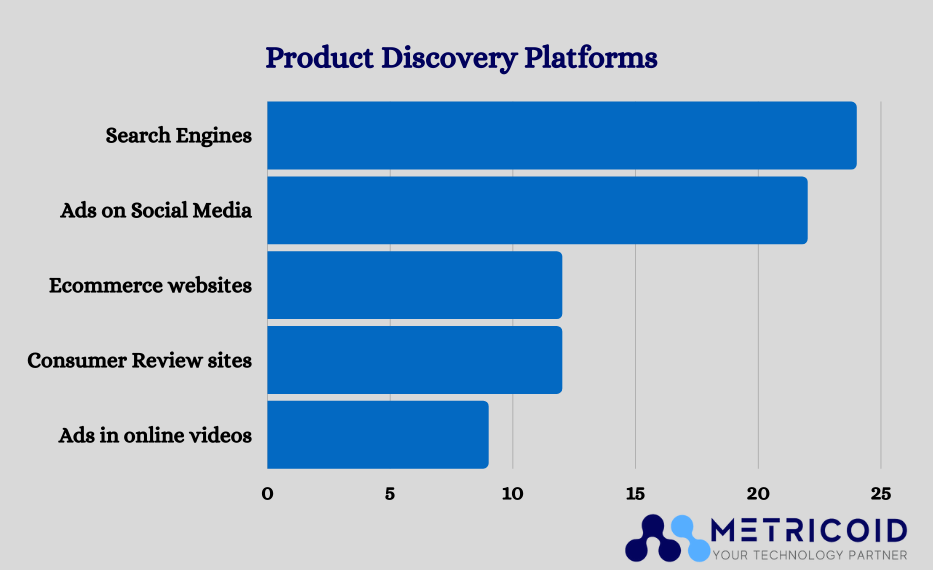Product Discovery and its importance in Business

Ever wondered how product discovery and market validation approaches can boost your startup’s way to industrial glory? No?
Well, this article will take you through a detailed overview of product discovery procedures, and also how a tech partner company can be your best helping hand.
Table Of Contents
Introduction
Creating and developing a product is a difficult task. No matter what kind of concept or product you want to develop, starting from scratch afresh will take a great deal of research, dedication, time, effort, and money. If services are developed and provided in a haste or even with improper methodology, they will not showcase the desired outcomes.
Product managers not being able to devote time to customer requirements occurs due to a lack of comprehensive understanding of the objectives and requirements, which could only be accomplished via product discovery.
What is Product Discovery?
Product Discovery is an important stage in the product development cycle because if organizations don’t accurately confirm or refute their beliefs and assumptions about their customers, they risk wasting time developing products or services that no one requires.
The approach and strategy for product discovery should capitalize on the company’s strengths and make use of current channels. Product discovery can be of great help, since it:
- Ascertains that the team is enterprising and innovative
- Makes sure that a clear-minded product manager is in place.
- Attempts to record issues that customers are currently undergoing (generally through customer interview sessions or surveying and collecting data).
- Depicts a considerable insight of an average consumer by encouraging cross-team development and feedback.
- Delivers adequate time to the client’s issues and requirements.
- Accumulates relevant feedback and responses on customers’ problems from as many sources as possible.
- Guides in prioritizing items throughout the development procedure.
- Helps investigate whether your assumptions about the customer are accurate.
- Determine which products and/or features will be most beneficial in providing great customer service.
Product Discovery is the strategy of lowering confusion and ambiguity about a concept or problem progressively and gradually in order to ensure that we produce the appropriate product for the proper people.
Why is Product Discovery so important?
The product discovery process is critical because it allows companies to develop products and solutions that really are essential to their consumers rather than just good to have.
Let us have a look at a major example, as to why product discovery is so necessary and important.

The above visual illustration demonstrates the amount of daily unique visitors until a course of time, precisely, 2011. Notice the gradual decline of Google’s Orkut usage (indicated in deep blue) around the mid of 2010?

Yes, Orkut provided a strong and robust foundation, the very basics upon which a social media platform was based. It included:
- Adding friends
- Chatting services (G talk)
- Theme customization
- Community polls, etc.
But gradually, as days passed by, technology and its services enhanced at a rapid pace, Google’s Orkut, once founded in 2004, eventually came to a complete shutdown in 2014, after another application founded by Mark Zuckerberg and his team – Facebook, dominated the market.
Orkut’s collapse was mostly due to Facebook. Orkut couldn’t well qualify the market validation procedure.
- Facebook has a sophisticated appearance to it. Orkut, on the other hand, had a shabby appearance.
- Orkut provided users to group their friends into categories such as close friends, acquaintances, and other friends. This created whole new levels of confusion. Whereas, Facebook does not categorize its users. It is simply a list of friends.
- Facebook has increased security protocols, as opposed to Orkut, making personal information vulnerable.
Problem Space vs. Solution Space
According to research conducted by publicity, almost 80-90% of the startups fail to operate, as soon as a new product is deployed in the market.
They fail to attract customers since the product was either deployed in a rush and chaotic timeframe, or no proper product discovery was conducted for market validation.
- An essential product is one that satisfies a customer’s sincere demand to the point.
- The benefit is evident: requirements are in higher demand, greater competition, and have a better rate of success.
While operating in both areas is required to please users and assist the business organization, companies frequently make mistakes in their time and attention allotment. Product discovery is primarily concerned with the problem space.
These stages could be roughly mapped out as follows:
- Problem space defines why the difficulty is worth solving.
- Solution space is as to why the remedies are worthy of consideration.

But make absolutely no misunderstanding about that. Just because there are more stages allocated to exemplifying solution concepts does not at all mean you should devote the majority of your time and effort to them.
Prioritizing, identifying, and comprehending the issue area is the focus of synchronization and investigation. Before you can go further into the solution area, you must first lay the foundation.
Values of Product Discovery
As a product team, you’ll always be engaged in some form of the Product Discovery phase. This is because, in order to be really customer-centric, you would like to introduce as many team members as practicable to customer reviews on a regular basis.
- Departmental: Product discovery is a collaborative effort including people from many consumer development departments, brand management, customer success, consumer experience, and product management.
- Expertise: Make use of skills and understanding to gather assistance for important product decisions.
- Customer-centric: The product discovery phase allows the teams to develop a product that is essential to the customer’s needs.
- Value: Product discovery adds value to the product team, the firm (for example, by avoiding spending precious resources chasing the incorrect ideas and building products that no one desires), and buyers (by offering something that they would consider essential).
- Assurance: Product Discovery guarantees that product managers and organizations are on the correct track when it comes to prioritizing and developing a successful and profitable product.
You may minimize wasting so much of your precious time on dead-end products and features by including a robust product discovery approach within your project strategy and planning phase. When this phase is skipped, the outcome is an influx of usable but ultimately pointless programs and products. It is indeed a complete loss of time and money.
When is Product Discovery required?
Since there are various unknown factors regarding what the company requires to produce, for whom, and also why, product discovery is essential. It’s dangerous to develop a product based on theoretical data and self-made assumptions. You could wind up tackling an issue that has already been resolved, thereby squandering your precious business time, energy, and funds.
Here are several situations when product discovery is required:
-
New possibilities
Growing your company by releasing a service or product in a foreign country or for individuals from distinct categories.
-
Development of New Product
If you have a concept for a new product, it’s best not to start developing it until you’ve identified the target market, their wants, demands, and interests.
-
Improving products
Identifying and analyzing the problem before adding new functionality or features to your product.
-
Potential Problems
Product developers might have some substantial solutions and ideas that they might pursue and evaluate.
Step-by-step procedure for efficient Product Discovery

You would definitely not want to begin with the day-to-day techniques while preparing and arranging for a forthcoming Product Discovery. Therefore, progressively expanding closer makes sense. As previously indicated, the bulk of Product Discovery should be devoted to gaining a better understanding of the problem space.
-
Organize your team and know what you’re selling.
Your primary task while trying to start a new session of product discovery would be to engage yourself in the environment of your customer.
- Commence user research, now that you’re completely aware of your own theoretical assumptions about your product.
- Consider the larger set of challenges that your project is attempting to solve. Use this information to guide your customer research.
- Focus on conducting customer interviews and group discussions for analyzing product data.
- As a project manager, organize startup conferences to give your staff a clear idea of the workflow.
- Create a shared understanding of the issue – choose appropriate techniques or methods to achieve the goal.
- Build trust. Make sure your stakeholders have utmost confidence about the product definitely meeting their expectations.
- Concentrate on describing genuine issues and talk to users who have confronted them.
Even if you’ve performed a fantastic job of defining your product expectations, you should double-check that your user interviews remain objective. That focuses on eliminating pertinent questions that suggest a remedy you’re already considering introducing to your roadmap, which is more difficult than you may imagine.
-
Identifying, defining, and deciding on user problems.
For user research, the software development business employs a variety of tools and approaches to collect feedback from users in an orderly manner, allowing the true requirements of the users to be revealed. To carry out the research process, teams can undertake user interviews, observational studies, surveys and evaluations, and competition analysis, depending on the type of product.
- Begin by comprehending the challenges that your preferred users face.
- Convert existing data of ongoing input into concrete evidence repositories.
- Seek for a variety of evaluation solutions accessible on the internet, to record and structure the constant client input.
Spotify‘s User Research team recently released some practical information about one of their initiatives. In it, researchers and data scientists worked to examine user behavior from as many perspectives as feasible.
-
Brainstorming, forming ideas and solutions
With creativity exercises and other ideation approaches like team discussion, mind mapping, content creation, project planning, and executing design iterations, your team can get incredibly innovative.
- Jot down as many ideas as you can.
- Don’t run out of new products and feature ideas.
- Start looking for solutions to the user’s problems and demands.
- Convene conferences with project team members to present the facts.
- Do not give stakeholders everything you’ve acquired, all at once.
- Prioritize your ideas.
- Concentrate on the features that will make your product increasingly helpful.
- By the conclusion of this stage, you should have a perfectly clear aim and strategy for your product.
- Prepare the first organized version of the gathered data and begin by brainstorming and scribbling thoughts.
Brilliant ideas will resurface in subsequent versions, eventually making their way into the most important categories. Don’t be concerned about preserving them – nevertheless, concentrate on moving forward with the ones you’ve chosen.
-
Development of prototype and experimentation
Beginning to experience and to see the tomorrow – Is that not the reason we all went into product marketing, to begin with?
At its finest, the position allows you to connect genuine problems and critical challenges with perfect solutions and create something that did not even exist previously. Prototyping helps with product development in many ways.
- Users’ problems: It is the first phase towards addressing a user’s concern or challenge, and when implemented correctly, it minimizes risk by ensuring we don’t waste time developing and deploying the incorrect solution.
- Turning ideas in real-time: Teams can use prototypes to showcase and deliver their ideas into action. Drawings, layouts, interactive prototypes, MVPs, and even employing competitive or similar lucrative items are all examples of prototypes.
- Solving issues: The prototypes that teams develop are determined by what they want to understand, what needs to be examined, and what unanswered queries they still have.
Your customers will be the only ones who can tell you whether a concept is useful enough to move forward with product development.
- Rapid prototyping is a development approach that allows teams to quickly evaluate and examine product design ideas.
- The major purpose is to obtain useful thoughts and customer feedback early on.
- Refining the solution until it fits all of the user’s expectations and demands, would be the next step.
- Employ rapid prototyping to evaluate various solutions and quickly identify whether or not the idea is viable.
- Evaluate whether the prototypes are appropriate, need modification, should be re-examined, or should be discarded depending on the user interaction.
- The design team should have a clear picture of how a genuine customer would interact with the final product.
The process of prototyping is continuous. As a result, you shouldn’t anticipate finding the perfect option in one meeting.
Within innovative organizations, the product discovery process is dependent upon developing plans, building on them, evaluating performance, and learning and understanding from them in order to make them smarter and more viable.
-
Validation of your ideas
Throughout the idea validation and verification phase, you determine whether or not the new product idea is worth your time, effort, and funds. Despite the fact that this stage is very similar to the user research process, you now have a feasible solution at your fingertips.
For a better result, you should try validating your ideas and workable solutions from many perspectives and utilizing a variety of ways. You could employ various methods of analysis, surveys, and user interviews, for example, to determine how customers will respond to your product or service.
- Make certain to keep consistent with the signal strength while employing various ways to validate your proposal.
- Always test theories and ideas prior to deploying your workforce for your product development.
- Keep a close eye on the changes in how funds are spent inside firms of all sizes.
- Focus on the tests you can complete instead of concentrating on the ones you can’t.
However, be clear about the signal intensity of insight when sharing the data. The two most important factors to examine here are:
- How close the research was to the consumer,
- How genuinely the users had accepted it.
-
Modifying and Refining results
Product discovery is not really a continuous cycle, as previously stated. You must consider moving back and forth to align your customers’ requirements with your corporate goals in order to create a viable product. What you can do in this step is also influenced by the results of the idea validation phase.
- In this stage, if you’ve effectively validated your idea, you’ll need to collect data to create an MVP.
- Go back to the research phase, if your proposal fails the validation test.
- Product Delivery will be the following subsequent step.
- Have a collection of validated assumptions and ideas to be used as material for developing a Minimum Viable Product (MVP).
- Split the validated concepts into groups and prioritize them.
Furthermore, the results of all of the preceding processes are frequently disorganized in teams. The most important responsibility for your product team at this point is to organize the data according to your firm’s procedures and information.
How can a Tech Partner help you with Product Discovery?
Owners frequently seek to speed up every aspect of their organization in order to complete tasks more quickly.
Sooner to market, faster to build a product, faster to test it with a target audience, and easier to make a profit and generate rapid income. However, faster approaches often correspond to the least potential standard of reliability.
So, how do you get it to operate properly? To be precise, software product discovery with a technology partner is your closest companion. This is how.
- Using extensive planning helps to reduce risk and expense.
- Focuses on identifying corporate goals and economic potential along with the scope of the project.
- It can take anywhere from a few days for minor tasks to several weeks for larger projects.
- Throughout the process of discovery, a software architect with extensive expertise in delivering and releasing software products will assist you.
- Always yields shaped valuable information.
- A quickest and most premium and cost-effective way to begin product development.
- The well-staged viewpoints guarantee lesser stages toward completion of the project.
- Your tech partner will educate you much more about the company niche you’ve chosen.
- Alongside customer feedback, you’ll be proud to offer your fantastic services.
- Technology partners specialize in building and developing MVPs for your product, effectively reducing your time-to-market.
- They will assist you in analyzing your marketing strategy and defining the project’s strong and weak points.
- Helps you assess the market and competitors, map customer journeys, and plot the best path to your objectives.
Conclusion
Most individuals and organizations start building and developing too soon, with very little experience. Then they construct something that clients dislike, completely miss the point, or require further funding to execute and finish.
When you recommend Product Discovery as a means to improve your outcomes, you will be initially rejected. Nevertheless, the goal of a Product Discovery, in its most basic form, is to raise your confidence that you’re tackling the appropriate challenge, for the relevant consumer, with the right product.
A summary of technology that would be used to implement the features you specified should be provided to you. A technology partner does all that for you. With their honest communication skills and a broad range of expertise from around the world, tech partners are the best choice for suitable product discovery.
Have doubts? Consider employing Metricoid’s product discovery services to verify innovative product ideas for suitable product discovery and build a quick market fit. We use a range of strategies that have been explored before. To build the product’s idea, identify and prioritize important features, and provide a user-centered interface, we adopt an evolutionary, progressive method. As a result, within just a few weeks, we can create an engaging prototype that allows you to test and evaluate your concept with real people. We continue collecting user feedback just after the original release in order to produce new and enhanced editions of the product. The ultimate goal of creating a digital service or product is to add value to personal minds by keeping their daily tasks easier, quicker, and more enjoyable.






